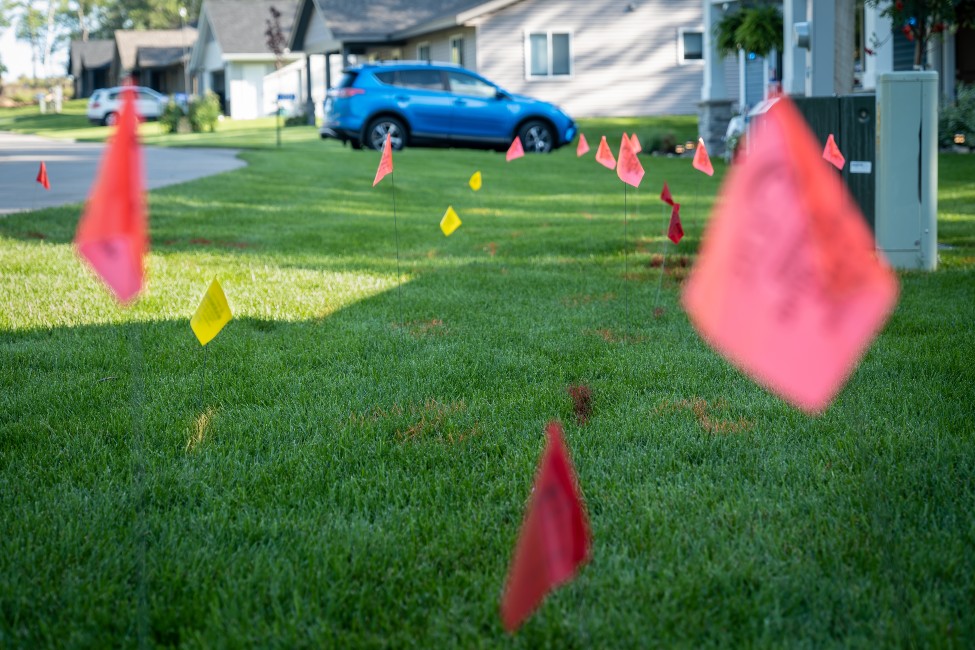Whether you are a tradie, gardening guru or DIY novice, digging up the backyard is a necessary step in many outdoor building, renovation or repair projects.
However undertaking any excavation works without the correct safety precautions can unearth some major hazards in the process.
Known as “Digging blind”, the act of not checking for critical assets prior to work commencement runs the risk of striking vital infrastructure assets such as power, water, gas and telecommunication lines.
Hitting one of these essential services can not only cut off the property’s services but also lead to severe injury to the individual, depending on the nature of the strike.
In some cases, damage to services can be so severe that entire streets, suburbs and even states can share the infrastructure interruption, such as in March last year when Tasmania lost all digital connectivity after construction crews accidentally cut two separate communication cables in one day.
That’s why it is essential all outdoor excavation work is well planned with careful consideration of the property infrastructure plans to ensure asset strikes are avoided.
One of the easiest ways to do this is by utilising free online asset location tools such as Before You Dig Australia (BYDA), which helps homeowners, tradies, and construction workers easily locate and mark up underground asset locations before work gets underway.
The online tool allows users to enter an address and locate key service facilities using digital property plans, where they can even outline and draw on interactive maps.
Plan access and worker details are even logged to help keep track of past projects for future reference and added safety.
How to use the BYDA:
- Create an account, login and search for the dig site via the address, lot number or coordinates.
- Use the mapping tools to draw your proposed project site.
- You can lodge a new enquiry or copy details from a previous job.
- Provide project details, including location, start and end dates.
- Tell us if you are working on behalf of a utility, council or private entity.
- Describe the project in detail so utilities can provide information.
- Check all the details of your enquiry and then submit.
- Receive an email with a list of all asset owners, their contact details and expected wait times.
- Go to “View responses” to access plans and safety information from each asset owner.
Who Can Use BYDA?
Before You Dig Australia spokesperson, Tania Nitschke told Build-it the platform was accessible to anyone that is about to dig a hole to help prevent service outages for both property owners and the surrounding areas.
“If you are planning on any excavation work, rather than try to guess or figure out what utilities are going through your property, you can come to the website, enter your details, and you get all the plans in one go,” she said.
“We want to make people aware of the service and make them aware of safe excavation practices, the whole idea is to reduce the risk of damage to assets and keep people safe.”
Homeowners tips before you dig:
- Determine who will lodge the BYDA enquiry before work commences.
- Look for asset clues on site, such as the water, gas or electricity meters.
- Assets may be under footpaths, driveways, nature strips, or near fencelines.
- Never assume the depth of pipes and cables.
- Asset owner details are on the email received after lodging the enquiry.
- Plans you receive after lodging a BYDA enquiry are indicative only.
- The plans may not contain specific details within your property area.
- Consider using the service of a skilled locator to assist you.
- Record information and any notes if you damage any services.
- Be aware that asset owners may seek compensation for any damages.

Commonly used by civil contracting industry, councils, plumbers, landscapers, electricians and telecommunication workers, Tania says Before You Dig Australia is trying to inform DIY lovers about the service for the protection of their assets and themselves.
“People can be hurt, imagine if you hit a high-pressure gas line, electrical cable, or even water,” she explained.
“We had a recent case where the water cannoned out and injured somewhere.”
“But these incidents can be easily avoided by doing due diligence, getting your plans, and doing the correct preparations.”
Tania says while the BYDA platform is easy to use, DIY lovers who still feel uneasy about digging up the backyard can seek the help of skilled utility locator professionals instead.
“You can call them, and they can identify the presence of underground utilities by using our maps and EMF locator tools to mark out these utility lines for you,” she said.






